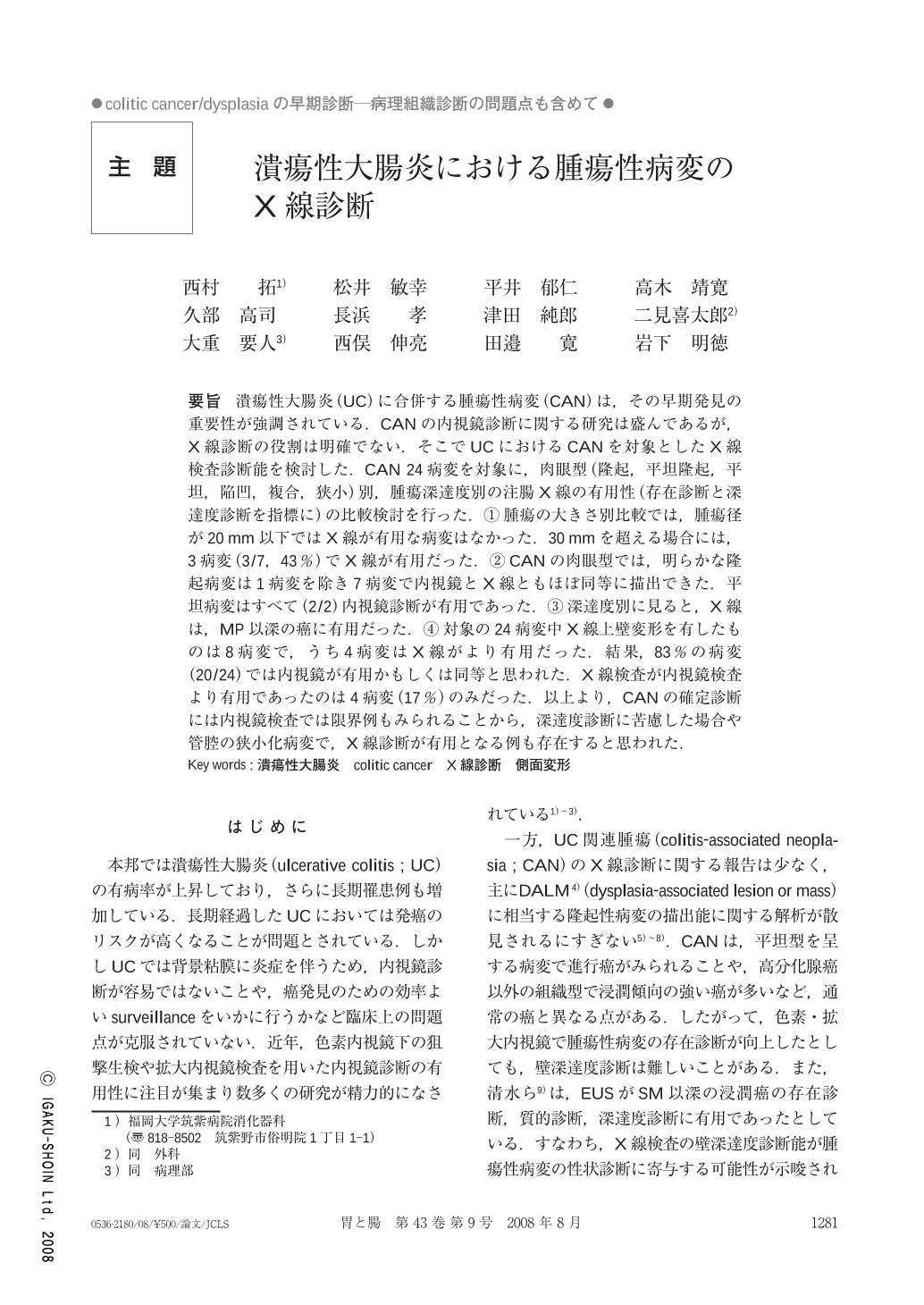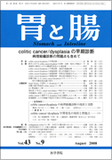Japanese
English
- 有料閲覧
- Abstract 文献概要
- 1ページ目 Look Inside
- 参考文献 Reference
- サイト内被引用 Cited by
要旨 潰瘍性大腸炎(UC)に合併する腫瘍性病変(CAN)は,その早期発見の重要性が強調されている.CANの内視鏡診断に関する研究は盛んであるが,X線診断の役割は明確でない.そこでUCにおけるCANを対象としたX線検査診断能を検討した.CAN 24病変を対象に,肉眼型(隆起,平坦隆起,平坦,陥凹,複合,狭小)別,腫瘍深達度別の注腸X線の有用性(存在診断と深達度診断を指標に)の比較検討を行った.(1)腫瘍の大きさ別比較では,腫瘍径が20mm以下ではX線が有用な病変はなかった.30mmを超える場合には,3病変(3/7,43%)でX線が有用だった.(2)CANの肉眼型では,明らかな隆起病変は1病変を除き7病変で内視鏡とX線ともほぼ同等に描出できた.平坦病変はすべて(2/2)内視鏡診断が有用であった.(3)深達度別に見ると,X線は,MP以深の癌に有用だった.・対象の24病変中X線上壁変形を有したものは8病変で,うち4病変はX線がより有用だった.結果,83%の病変(20/24)では内視鏡が有用かもしくは同等と思われた.X線検査が内視鏡検査より有用であったのは4病変(17%)のみだった.以上より,CANの確定診断には内視鏡検査では限界例もみられることから,深達度診断に苦慮した場合や管腔の狭小化病変で,X線診断が有用となる例も存在すると思われた.
Recently it has come to be regarded as important to diagnose colitis-associated neoplasia(CAN)in the early stage. Endoscopic diagnosis(ED)for CAN has been researched rigorously, but radiographic diagnosis(RD)for CAN has not played a definite role. In this study we intended to clarify the usefulness of RD for CAN in our institute.
Our subjects were twenty-four neoplastic lesions classified into six macroscopic types(protruded, flat elevation, flat, depressed, conglomerate, stenotic). Usefulness of RD was evaluated in these six macroscopic types and according to invasion depth. Usefulness of RD to diagnose tumor configuration and its invasion depth accurately was evaluated based on the comparison of ED of these six macroscopic types and radiological invasion depth. Results:(1)Comparison of usefulness of RD and ED according to tumor size:In small lesions(<20mm)RD was not better than ED, but in large lesions(>30mm)RD was better than ED in three cases(43).(2)Comparison of RD and ED according to macroscopic types of lesions. In protruded type RD could depict the lesions as efficiently as ED except in one lesion. In flat lesions ED could depict the lesions better than RD.(3)According to invasion depth RD was more useful than ED when the tumor had invaded deeper than the muscularis propria. In four of eight lesions showing lateral rigidity RD was more useful than ED. In summary, in 20 of 24 lesions ED was equal to or better than RD in usefulness. Usefulness of RD was better only in 4 lesions(17). From the above results, it is concluded that in advanced cancer or stenotic lesions ED has limitations as a diagnostic tool. In these cases it is recommended that RD be used for more efficient dignosis of the tumors.

Copyright © 2008, Igaku-Shoin Ltd. All rights reserved.


